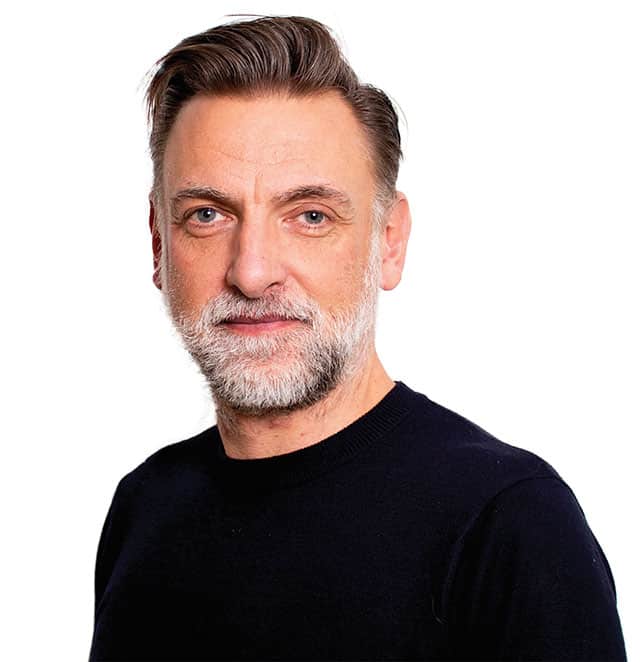
Before we explore answering this question there are a couple of other questions I need to answer first.
Firstly, and most difficultly, how do we define creativity? The answer to this can differ wildly from person to person but it is usually based on technique and execution of an idea or in some magical realm on the edge of sanity. The definition of creativity I prefer (based on the day-to-day challenges we face in healthcare comms) is having the conviction in a unique or alternative viewpoint that engages the viewers, piques their interest and demands attention.
Secondly, what is healthcare comms? As the creative director of a global med affairs healthcare agency, I’ll answer this from the medcomms perspective. Healthcare comms is the interpretation of complex data and difficult subject matter (I have a colleague whose portfolio of products are all ‘end of life’ care) in a way that helps support and inform decisions. It’s a good feeling and a great responsibility to realise that in healthcare, everything we do is a matter of life.
The power of creativity
The power of creativity in healthcare seems to have finally been recognised, at least on the commercial side of the industry, by big pharma. You only have to look at this year’s Cannes Lions to see campaigns that would not look out of place in the ‘real’ world.
But how is creativity being used when a discovery needs to be communicated from discovery in the lab to those that effect outcomes? All that complex data needs interpreting into something more palatable. Historically the audience may have been seen as relatively captive where a 200-page white paper and the accompanying 100 graphs in a slide deck cover every eventuality. But now the world is changing at pace (none more so than in the last two years) with an already time-poor target market, desperately in need of information quickly, having their time stretched to breaking point.
The solution to this problem is already all around us as consumers. We can think healthcare is immune to consumerism when we are all in fact consumers in our everyday lives – exposed to, and involved in, communications every single day. From social media to sponsorships and billboards, it’s everywhere. Ideas and mechanisms that hone down complex information into creative, bite-sized, palatable pieces that get to the point quickly and clearly, influencing us to choose one thing over another. We need to utilise these experiences and techniques in healthcare and not run away from them or find reasons why they won’t work before we even try. We can use regulatory as a legitimate stick to beat ourselves with when pitching new ideas in healthcare. I’ve seen the cleverest and most creative idea reduced to an ineffective shadow of what it once was after going through rounds of amends.
Creativity in healthcare should be a way of thinking that inspires, challenges and helps people to find innovative solutions and create opportunities from problems. It’s the reason some companies ‘wow’ us with new, amazing ideas, while others merely add to the morass of mediocrity. An HCP/patient is better influenced by stand-out creative that draws a line from their problems to the ability of the treatment to solve them.
A problem-solving skill
Creative thinking is a problem-solving skill that helps to find opportunities and sees challenges as a chance to improve the situation and become a catalyst for change. If you can show you understand your audience’s problems and how they feel, you will have a better chance of crafting a story that helps them understand the value of the treatment. Integrating this creative approach into your daily ways of working is not easy and doesn’t happen by chance.
In my opinion the success of healthcare comms is in a shared creative mindset.
Everybody involved needs to have a shared vision, to use their individual talents and skills to work closely together, to listen and uncover the real challenges. This means breaking down the divide that can happen in traditional client relationships and involve creativity from the very beginning, and not rely on the creatives to do their ‘magic’ once all the content has been approved and key decisions have been made. This may sound strange coming from a creative director, but no single person has the divine right to have the ‘big’ ideas. This is especially true in healthcare, where the science can be complex and subject matter life-changing.
So, how should healthcare harness creativity?
By collectively pushing boundaries. Dare to be different. Avoid the morass of sameness. Talk to (not at) your audience – they are real people – and show how you can help them overcome their obstacles and change their lives for the better. Have the bravery to trust in those who capturing hearts and minds, those who are pioneering new ways of communication, because when you find the perfect alchemy of audience synergy, scientific relevance and the ability to hook and engage a busy audience, then you’ve found the answer.
Rob Gale is Creative Director at Ashfield MedComms, an Ashfield Health company




